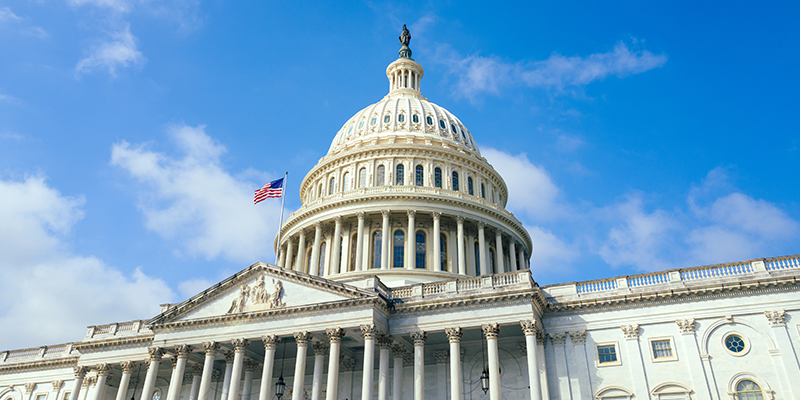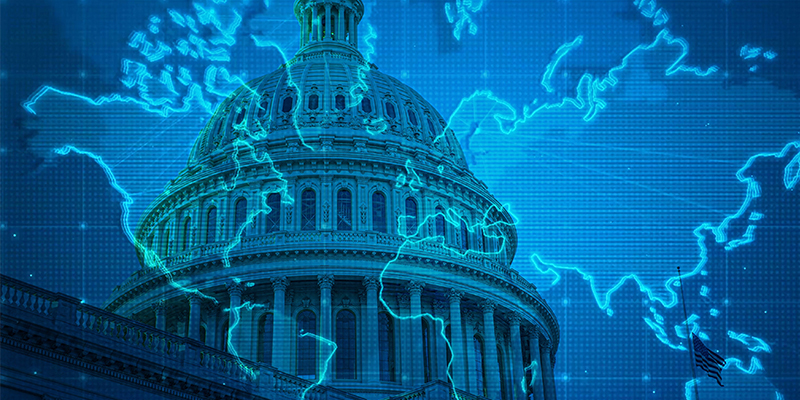By Eric Schmutz
With trade policy once again taking center stage in the U.S., industrial real estate leaders are watching closely to understand how sweeping tariff changes could reshape supply chains, manufacturing and market demand.
Newmark’s Lisa DeNight, managing director for national industrial research, and Charlie Smith, managing director for geopolitical strategy, discussed the implications and shared their predictions at NAIOP’s I.CON East this week in Jersey City, New Jersey.
DeNight and Smith both noted that the actions taken by President Donald Trump since taking office have resulted in a historical increase in tariff rates for the U.S. that has not been seen since the mid-1960s, likely resulting in a baseline rate of 10% on all imports.
The two went on the explain that the Trump administration has two tariff strategies to be aware of, the first being bilateral tariffs. These are primarily reciprocal in nature and have focused on China and the European Union (EU) but have also been implemented against individual countries as a negotiating tactic.
The second is sectoral tariffs. Examples of these include those on steel and aluminum, as well as critical minerals, pharmaceuticals, and semiconductors. The speakers believe that sectoral tariffs could be announced as the Trump administration continues to pursue trade agreements.
DeNight noted that the process to achieve trade agreements is timely and noted that the best example of the current U.S. situation could be seen in the similarities with the United Kingdom’s (UK) experiences with Brexit, which began with the UK’s resignation from the EU in early 2020. The UK did not secure a trade agreement with the EU until 2021, and while that agreement was primarily based on earlier agreements, it resulted in a drop in goods being traded and an increase in service contracts.
Smith noted that the stated goal of the Trump administration for implementing tariff increases is to return manufacturing and reshore much of the U.S. supply chain, a trend that was already occurring in the U.S. prior to Trump assuming office. For example, home improvement retailer Home Depot noted last year that “…12 months from now, no single country outside of the U.S. will represent more than 10% of our purchases.”
The speakers went on to note that tariffs are only one element of uncertainty facing CRE, noting that industry participants should also pay close attention to tax changes that could come from the tax bill currently before Congress, as well as how energy policy will influence the economy.
Despite the uncertainty, DeNight and Smith see positive signs for CRE in the U.S. economy, with major manufacturing announcements in the first quarter of the year exceeding $141 billion.
The speakers noted that as the share of imports from China decreases, imports from India will increase, which will result in an increase in traffic through East Coast ports. In addition, Mexico remains an attractive trading partner for U.S. companies.
Going forward, both believe that the current situation with global trade could expedite the renewal of the United States-Mexico-Canada Agreement, providing a framework for other trade agreements to be implemented, resulting in a lowering the baseline tariff rate below the currently expected 10%.
Uncertainty continues to be expected in the short term as the Trump administration has prioritized fast policy changes, based on their expectation of a less-compliant Congress in the second half of the president’s term. Smith closed the discussion noting to the audience that “plans are useless, but planning is indispensable.”

This post is brought to you by JLL, the social media and conference blog sponsor of NAIOP’s I.CON East 2025. Learn more about JLL at www.us.jll.com or www.jll.ca.








